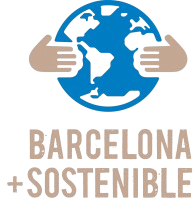On the "Lightness" of Sapiens: Humans did not inherit the robust bones of our ancestors
A study co-led by the Institute of Evolutionary Biology (IBE) and the University of Barcelona (UB) identifies a gene that contributed to the reduced bone robustness of modern humans compared to their ancestors.
The study reveals variants of the LRP5 gene that resulted in lower bone density in Homo sapiens sapiens compared to other archaic populations, such as the Neanderthals and Denisovans.
The team notes that this gene presents variations in different human populations worldwide, shedding light on a part of our evolution that may have medical implications.

Modern humans are taller and slimmer than our ancestors, who, in turn, were slimmer than coexisting archaic populations such as Neanderthals or Denisovans. This "gracilization" process is characterized by a lower bone density in current sapiens, which has traditionally been explained by environmental factors, such as the higher physical activity and mechanical load borne by our more robust ancestors, factors known today to increase bone density. However, to date, no genetic evidence has been found that played a role in the evolution of hominid bone density.
Now, a research team co-led by the Institute of Evolutionary Biology (IBE), a joint centre of the Spanish National Research Council (CSIC) and the Pompeu Fabra University (UPF), and the University of Barcelona (UB), has discovered that variations in the LRP5 gene contributed to differences in bone density between archaic sapiens populations, Neanderthals, Denisovans, and modern humans, with the latter having lower density. The team has also analyzed different genetic variants in this gene among present-day global populations, as well as among healthy individuals, with potential implications for human health.
Genes that Determine Bone Density Were Selected Thousands of Years Ago
Previous archaeological studies had identified higher bone density and weight in the skeletons of Neanderthal remains found in “La Sima de los Huesos” (Atapuerca) compared to modern humans. However, it was unknown whether there was a genetic basis behind this phenomenon.

To the left: Homo sapiens skeleton at the Zoology Museum of the University of Cambridge, England. Credit to Emőke Dénes, CC BY-SA 4.0, via Wikimedia Commons. To the right: Skeleton of an adult Neanderthal male. Credit to Tim Evanson (CC-BY-SA).
Using available genomes from archaic human populations of sapiens, Neanderthals, and Denisovans, the team conducted an evolutionary and functional analysis of the LRP5 gene, known for its role in human bone density. The research revealed unique variants of the LRP5 gene that differ among Neanderthals, Denisovans, and archaic and modern sapiens. These variants would account for the high bone density of the Neanderthals.
"The LRP5 variants of archaic sapiens persist today. This suggests that, despite the diverse interbreeding events that occurred between archaic humans and other populations like Denisovans and Neanderthals, the Neanderthal or Denisovan-origin genetic variants of this gene did not thrive, and we did not inherit high bone density. This is possibly because the Neanderthal or Denisovan variant provided no advantage to sapiens in that context," comments Oscar Lao, lead researcher at IBE and co-leader of the study.
"In this work, functional studies of LRP5 gene mutations found in Neanderthals and Denisovans were conducted, and it was shown that several of them behave similarly to those that produce high bone mass in current humans," note Daniel Grinberg, Susanna Balcells, and Neus Roca-Ayats of the Faculty of Biology at UB and co-leaders of the study, in which Leonardo Mellibovsky, from the Institute for Medical Research at the Hospital del Mar (IMIM), also participated.
LRP5 Gene Variants Contribute to Bone Density Differences Across Global Populations
Previous research had shown that current populations in sub-Saharan Africa have higher bone density compared to other global populations.
This evidence suggests that human bone density is determined partly by genetics and not only by environmental factors known to influence it, such as physical exercise, climate, and diet.
LRP5 Gene Variability and Its Implications for Human Health
The study identified numerous mutations in the LRP5 gene among healthy individuals in the current population. These mutations are found in regions of the genome that have barely changed throughout human evolution, also called "conserved regions."
"Mutations in conserved regions of the genome tend to result in significant phenotypic changes. These are regions of DNA inherited over thousands of years, which evolution has conserved for a reason. However, we observe that in the LRP5 gene of humans, there is an enrichment of such mutations compared to archaic populations like Neanderthals or Denisovans. Nevertheless, these recent mutations do not cause diseases but are found in healthy individuals who present more or less bone density, within a range of normality. This suggests that selection on this gene may have relaxed in the human lineage."
In current populations, these mutations may play a key role in diseases like osteoporosis or osteoporosis-pseudoglioma syndrome, a rare bone disease that can cause spontaneous fractures or fractures following minimal trauma.
Future studies could help determine the hereditary role of bone density in human health based on its evolutionary history.
Reference article:
Roca-Ayats, N., Maceda, I., Bruque, C.D. et al. Evolutionary and functional analyses of LRP5 in archaic and extant modern humans. Hum Genomics 18, 53 (2024). https://doi.org/10.1186/s40246-024-00616-6






















